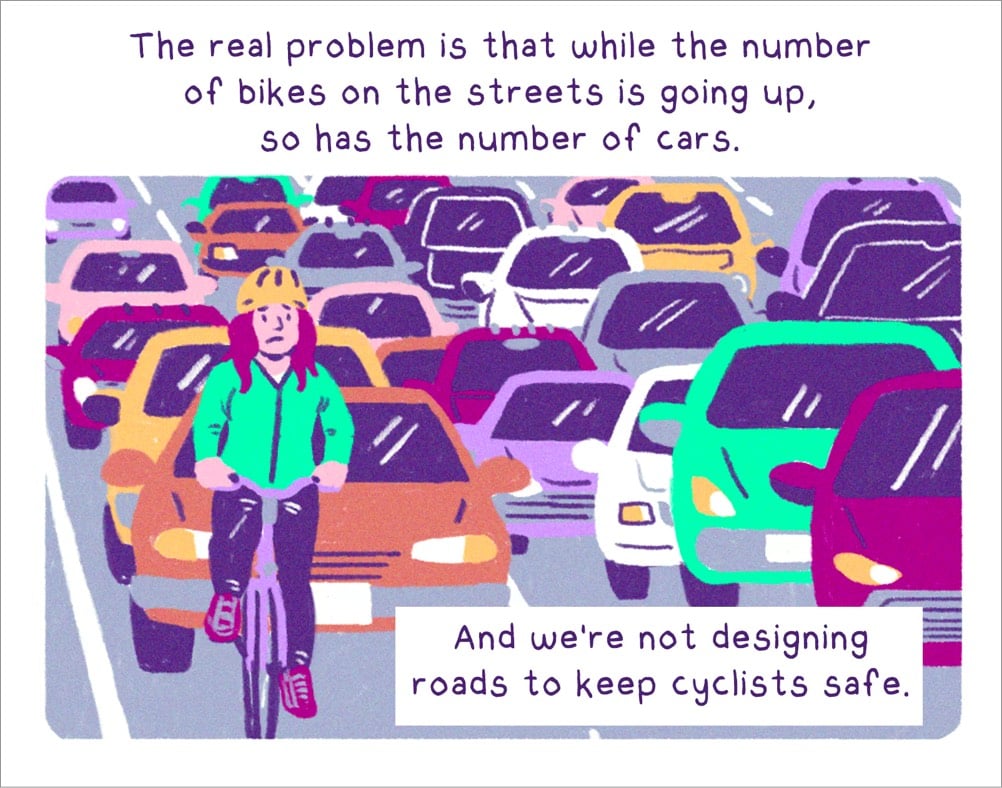Cars! What’s the Matter with Cars Today?
I read four things recently that are all related in some way to our cities and how we get around in them.
1. Was the Automotive Era a Terrible Mistake? by Nathan Heller in the New Yorker. The subtitle is “For a century, we’ve loved our cars. They haven’t loved us back.”
For years, I counted this inability to drive as one of many personal failures. More recently, I’ve wondered whether I performed an accidental kindness for the world. I am one of those Darth Vader pedestrians who loudly tailgate couples moving slowly up the sidewalk, and I’m sure that I would be a twit behind the wheel. Perhaps I was protected from a bad move by my own incompetence-one of those mercies which the universe often bestows on the young (who rarely appreciate the gift). In America today, there are more cars than drivers. Yet our investment in these vehicles has yielded dubious returns. Since 1899, more than 3.6 million people have died in traffic accidents in the United States, and more than eighty million have been injured; pedestrian fatalities have risen in the past few years. The road has emerged as the setting for our most violent illustrations of systemic racism, combustion engines have helped create a climate crisis, and the quest for oil has led our soldiers into war.
Every technology has costs, but lately we’ve had reason to question even cars’ putative benefits. Free men and women on the open road have turned out to be such disastrous drivers that carmakers are developing computers to replace them. When the people of the future look back at our century of auto life, will they regard it as a useful stage of forward motion or as a wrong turn? Is it possible that, a hundred years from now, the age of gassing up and driving will be seen as just a cul-de-sac in transportation history, a trip we never should have taken?
2. This comment from the NY Times’ list of The Summer’s Hottest Takes on the amount of public space (and funds) that’s given to cars in our cities.
City street parking should be considered public space. The current setup is ridiculous: In front of millions of New Yorkers’ apartments, for one example, there are 9-by-18-foot plots of space, available to anyone in the city… if they have a car and want to leave it there. Less than half of the city’s residents own cars, and far fewer can lay claim to any kind of outdoor space. So from Fort Worth to Philadelphia, why not let people use these patches of cement for something they can actually enjoy? Let people set up a table with some food, a little grill, a folding table to sit at and enjoy the sun, and each other. Make space next to the sidewalk. Hatch 10,000 tiny little public spaces in cities that are starved for some life.
3. Why Am I Scared to Ride a Bike?, a comic by Vreni at The Nib.

4. I Don’t Use Uber. Neither Should You. by Paris Marx, who says that “the tradeoffs are far too high for a little more convenience”.
A study of seven major U.S. metro areas from UC Davis showed that 91 percent of ride-hailing users didn’t make any changes to their car ownership status, and those that did made up for the reduced miles driven by taking more ride-hail trips. The researchers also found that 49 to 61 percent of all ride-hailing trips wouldn’t have been taken or would have used transit, cycling, or walking had ride-hailing not been an option. Another study by the Metropolitan Area Planning Council put that number at 59 percent in Boston.
Those are key figures because they show that Uber, Lyft, and their competitors not only add car trips in urban centers, they also make existing trips less efficient by shifting them from transit or cycling into a car. This process makes traffic congestion worse because it places more vehicles on the road.
See also this recent post, America’s Cars Are Heavily Subsidized, Dangerous, and Mandatory.





Stay Connected